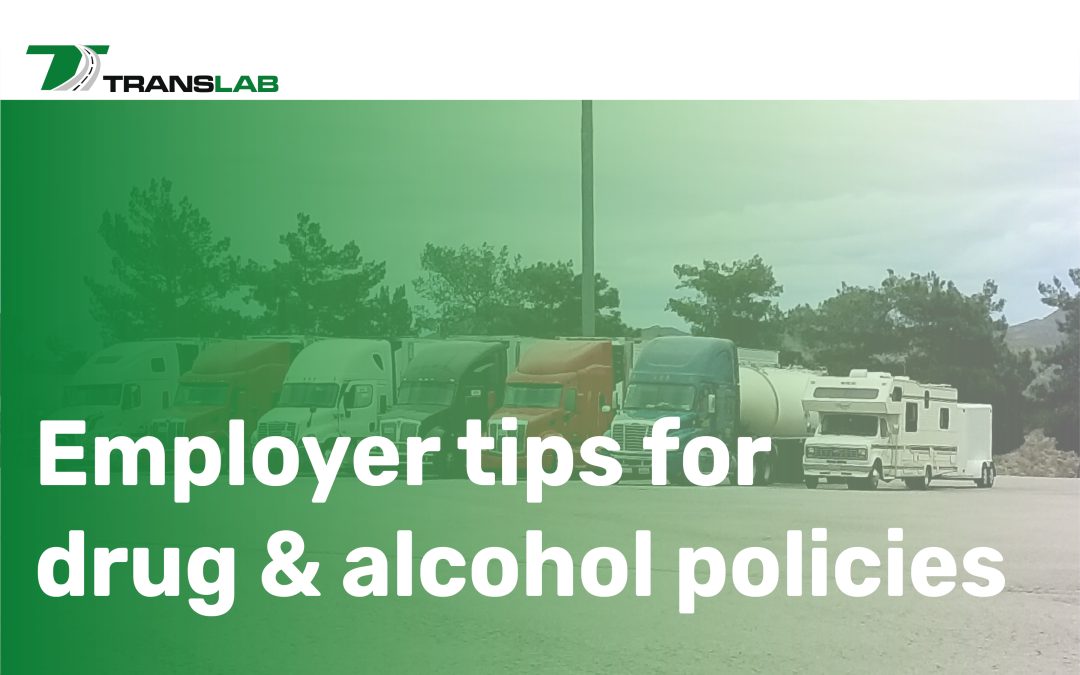Creating a safe and productive work environment is paramount for any business, as it fosters employee well-being, enhances overall efficiency, and maintains a positive company image. One crucial aspect of achieving such an environment is the implementation of effective drug and alcohol policies. These policies play a vital role in safeguarding the health and safety of employees, ensuring consistent productivity, and upholding the company’s reputation in the industry. By establishing clear substance-use guidelines and procedures, employers can mitigate potential risks, prevent workplace accidents, and create a supportive atmosphere that encourages responsible behavior. In addition, these policies help address and manage substance abuse issues, providing a framework for intervention and support when necessary. Here are some practical tips for employers on effectively developing and implementing these essential policies.
Understand the Importance
Before going into the specifics, it’s essential to understand why drug and alcohol policies are necessary. Substance abuse in the workplace can lead to accidents, lower productivity, and even legal issues. A well-crafted policy helps to set clear expectations, provides a framework for dealing with problems, and demonstrates the company’s commitment to safety and well-being.
Develop a Clear Policy
The first step is developing a comprehensive drug and alcohol policy. This policy should outline the company’s stance on substance use, the rationale behind the policy, and the consequences of violations. Here’s what to include:
- Purpose and Scope: Explain why the policy exists and to whom it applies. This sets the stage and clarifies that the policy aims to ensure a safe and productive work environment.
- Definitions: Clearly define what constitutes drug and alcohol use, abuse, and impairment. This helps avoid misunderstandings and sets a clear baseline.
- Prohibited Behaviors: List the behaviors that are not allowed. This can include the use of drugs or alcohol during work hours, being under the influence while on duty, and possessing illegal substances on company premises.
- Testing Procedures: Outline the circumstances under which drug and alcohol testing will occur. This could include pre-employment screenings, random testing, and testing after accidents or incidents.
- Consequences: Clearly state the consequences for violating the policy. This might range from mandatory counseling and treatment programs to disciplinary actions, including termination.
- Support Programs: Highlight support systems, such as Employee Assistance Programs (EAPs), which can help employees struggling with substance abuse.
Communicate the Policy
Once the policy is developed, it’s crucial to communicate it effectively to all employees. Here are some strategies:
- Employee Training: Conduct regular training sessions to educate employees about the policy’s importance and responsibilities. This can be part of the onboarding process and continued through annual refresher courses.
- Accessible Documentation: Ensure that the policy is easily accessible. This could be through the company intranet, employee handbooks, or posted in common areas.
- Open Dialogue: Encourage an open dialogue where employees feel comfortable asking questions and seeking clarification about the policy. This helps to build trust and ensure understanding.
Implement Fair Testing Procedures
Drug and alcohol testing is a sensitive issue, and it’s essential to handle it fairly and respectfully. Here are some tips:
- Consistency: Apply testing procedures consistently across all levels of the organization to avoid perceptions of bias or unfair treatment.
- Privacy: Conduct tests in a manner that respects the privacy and dignity of employees. Use certified laboratories and ensure that the results are kept confidential.
- Clear Protocols: Have protocols for what happens if an employee tests positive. This includes immediate actions and follow-up procedures, such as confirming the test results and discussing next steps with the employee.
Offer Support and Rehabilitation
A good policy is not just about enforcement but also about support. Here’s how to incorporate support systems:
- Employee Assistance Programs (EAPs): Offer access to EAPs that provide counseling and support for employees dealing with substance abuse issues. These programs can be a valuable resource for recovery.
- Rehabilitation Opportunities: Consider providing opportunities for rehabilitation rather than immediate termination for first-time offenders. This can include time off for treatment, support groups, or return-to-work programs.
- Ongoing Support: Implement follow-up support for employees returning to work after rehabilitation. This can help them reintegrate smoothly and reduce the risk of relapse.
Monitor and Review the Policy
Finally, it’s essential to monitor and review your drug and alcohol policy regularly. Here’s how:
- Regular Reviews: Periodically review the policy to ensure it remains relevant and practical. This can be done annually or in response to new laws or workplace changes.
- Feedback Mechanism: Establish a mechanism for employees to provide feedback on the policy. This can help identify any issues or areas for improvement.
- Stay Informed: Keep abreast of legal developments and industry best practices regarding workplace substance use policies. This ensures your policy remains compliant and effective.
How can Tanslab help employers?
Translab provides comprehensive drug and alcohol testing services for CDL drivers, ensuring compliance with US DOT regulations. We specialize in Clearinghouse setup and queries, offering 24/7 access to test results and scheduling. Our state-of-the-art facilities ensure accurate results, with convenient on-site testing and flexible scheduling to accommodate busy trucking schedules. Our streamlined processes and proactive monitoring help prevent violations and reduce administrative burdens.
At Translab, we prioritize exceptional customer service. Unlike larger consortiums, we handle all issues personally, with real people answering your calls. We offer various communication channels—phone, email, and text—and a user-friendly, paperless account system with same-day setup and unlimited online access. We are dedicated to providing the best possible experience for all customers.
Creating and implementing effective drug and alcohol policies is essential for maintaining a safe and productive work environment. These policies safeguard employee health and safety, enhance efficiency, and uphold the company’s reputation. Employers can mitigate risks and foster a supportive workplace by developing clear guidelines, communicating them effectively, and offering support programs. Regular monitoring and updates ensure these policies remain relevant and practical.


